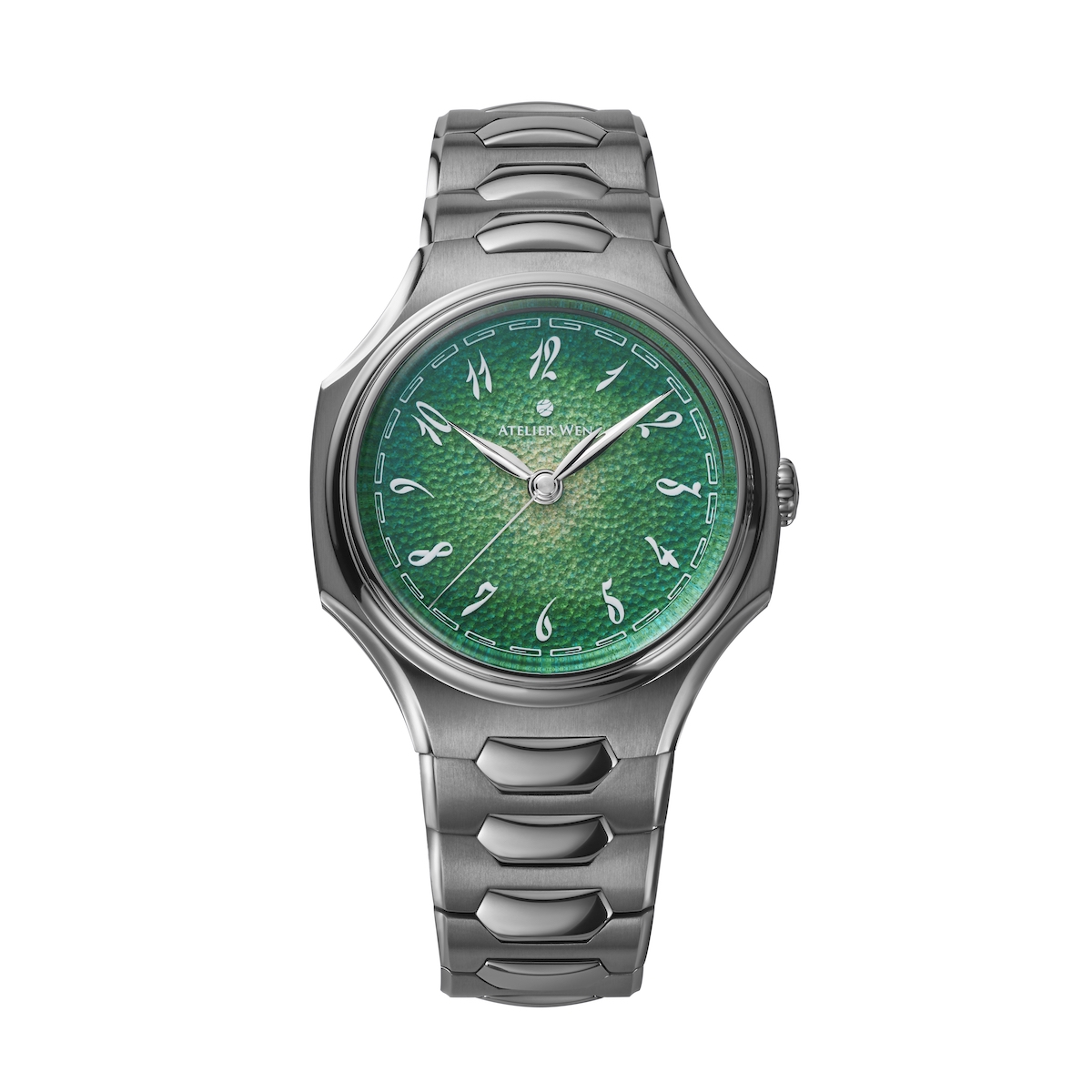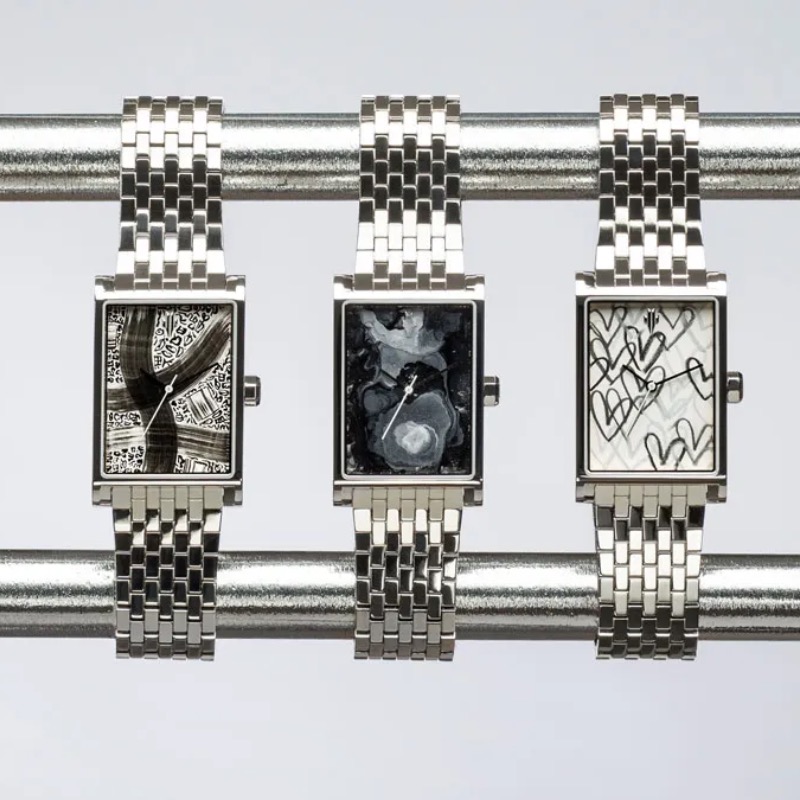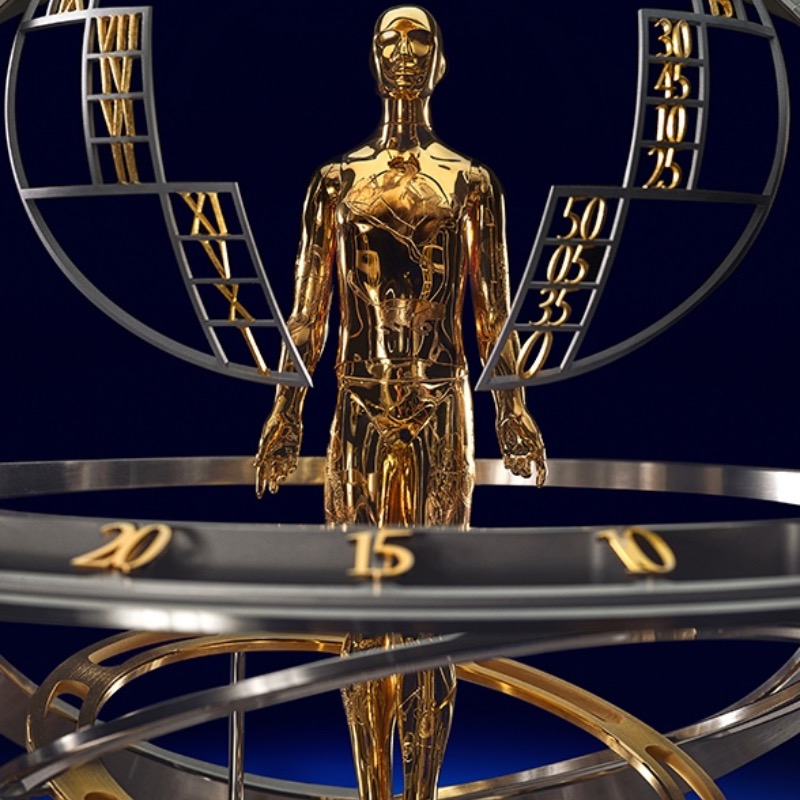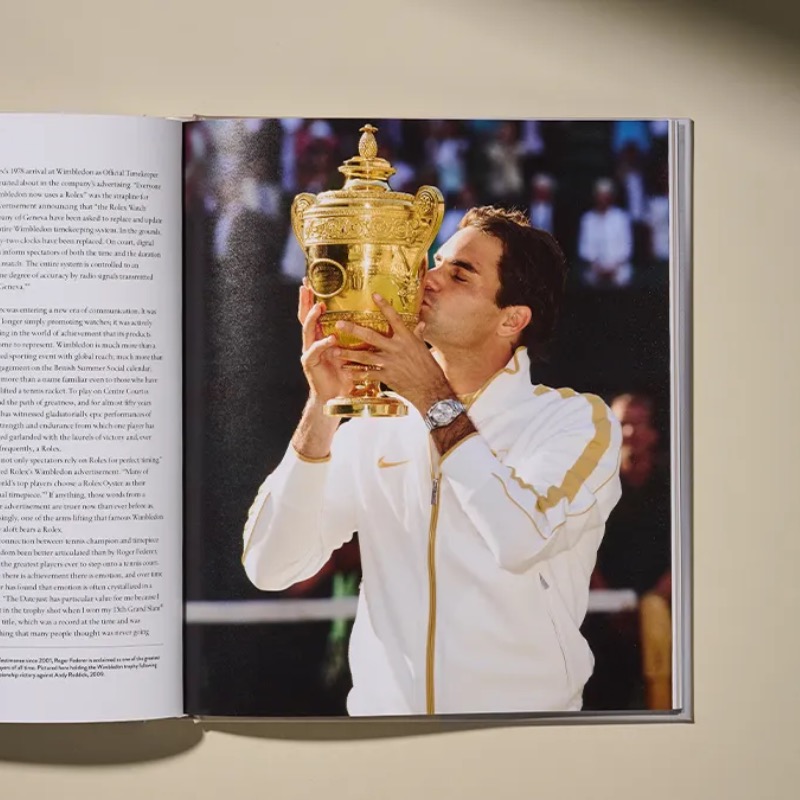Back to Basics
After an unparalleled pandemic-era boom, an aura of reticence and safetyseeking has settled over the watch industry. Reasons include everything from shoppers having less disposable income to manufactures playing catch-up on early-Covid production delays to—most significantly—global economic uncertainty.
The cool-off was made abundantly clear in April at Watches & Wonders, the world’s largest horological trade show. The sector’s biggest luxury brands largely played it safe, remixing existing models with minor tweaks—new dial colours, say, or swapping one metal for another. Rolex’s most desirable releases were positively subdued compared to its colourful 2023 lineup. The Crown debuted a Day-Date in Everose gold with a slate ombr. dial and a GMT-Master II in steel with a grey and black ceramic bezel—not the much-hoped-for updated GMT-Master II “Coke”—which didn’t exactly send the internet into a frenzy. The other tone-setting titan, Patek Phillipe, offered revised Nautilus and Aquanaut models on straps cut from a material resembling that workwear staple, denim, while the Ellipse got a new gold bracelet. And while it’s a great bracelet, overall, it’s clear that brands weren’t splashing out on R&D.
But if these timepieces failed to stir up the same hype as in years past, the rebalancing act should have collectors rejoicing. Dimming the spotlight on the high end of horology may make room for deserving clients to get their hands on new watches, rather than lingering on interminable waiting lists. Softening prices on the secondary market suggest that the speculators who drove up prices over the past few years have started to fall out of the game. If you love watches, there has never been a better time to buy.
And while traditional retailers are said to be struggling in the current environment, brands are investing heavily in their own brick-and-mortar locations. Chanel opened its first dedicated watch and jewellery boutique in the US on Fifth Avenue, only the fourth of its kind. Days later, Grand Seiko cut the ribbon on a new Madison Avenue boutique—its largest store in the world. Jaeger-LeCoultre inaugurated a flagship on Madison Avenue, and IWC followed shortly after, setting up shop on the same stretch.
These openings are obviously a sign of major brands banking on the US, but they also signify a renewed focus on in-person client relations. As far as long-term success goes, that beats a hype watch any day.
BRACELET
PATEK PHILIPPE
Ellipse Ref. 5738 1R
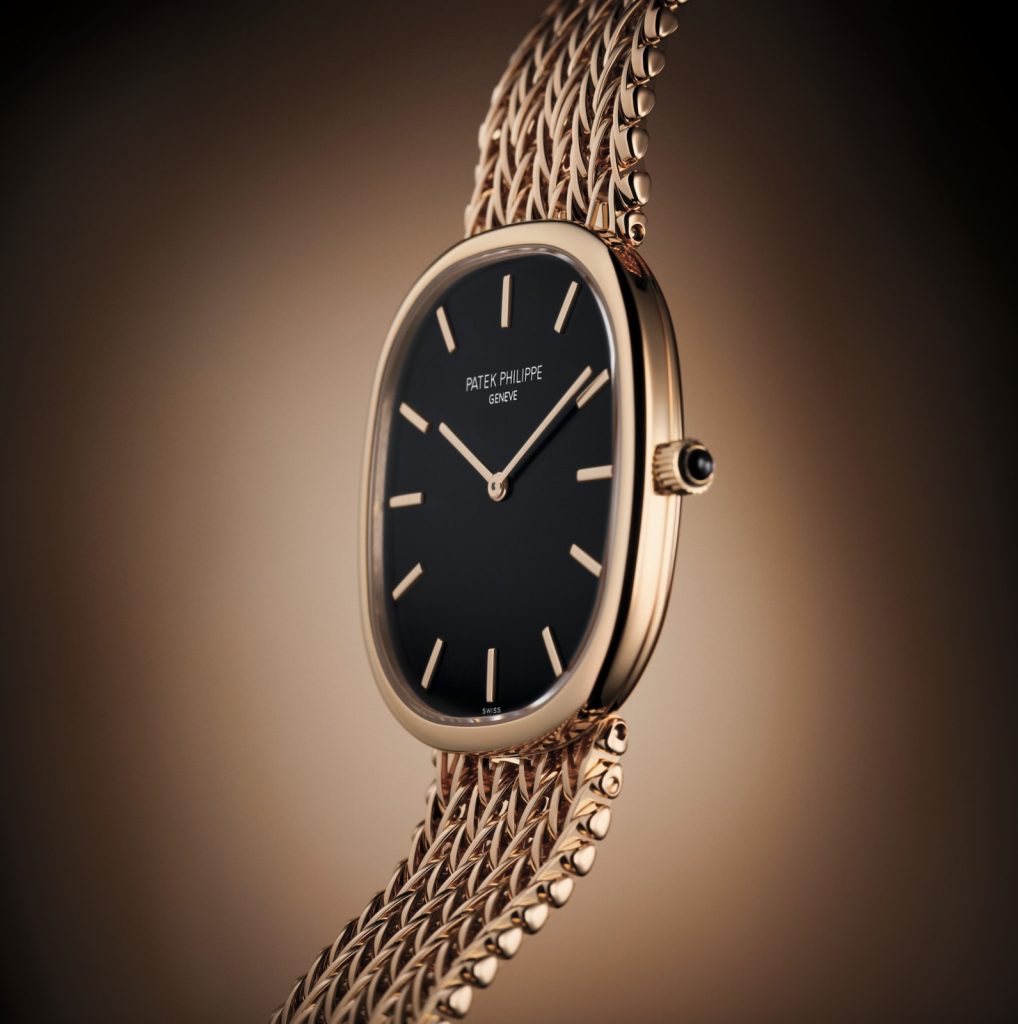
Handcrafted from 363 individual elements, the gold bracelet on the new Patek Philippe Ellipse is not only a feat of craftsmanship but also a first for this model in the modern era. Making a woven bracelet of this calibre is a far more challenging exercise than it appears. Jewellery obsessives will know that even the simplest-looking chains can be extraordinarily difficult to produce. As a result, very few of the Ref. 5738 1R—which is equipped with an ebony-black sunburst dial—will be made. (The brand won’t comment on availability, but rumour has it only two of these models are coming to the US.) Furthermore, the company says the Ellipse is becoming increasingly sought-after by younger collectors, so competition for this piece may be just as high as the climb for a new Nautilus.
AUTOMATION
VAN CLEEF & ARPELS
Brise d’Été
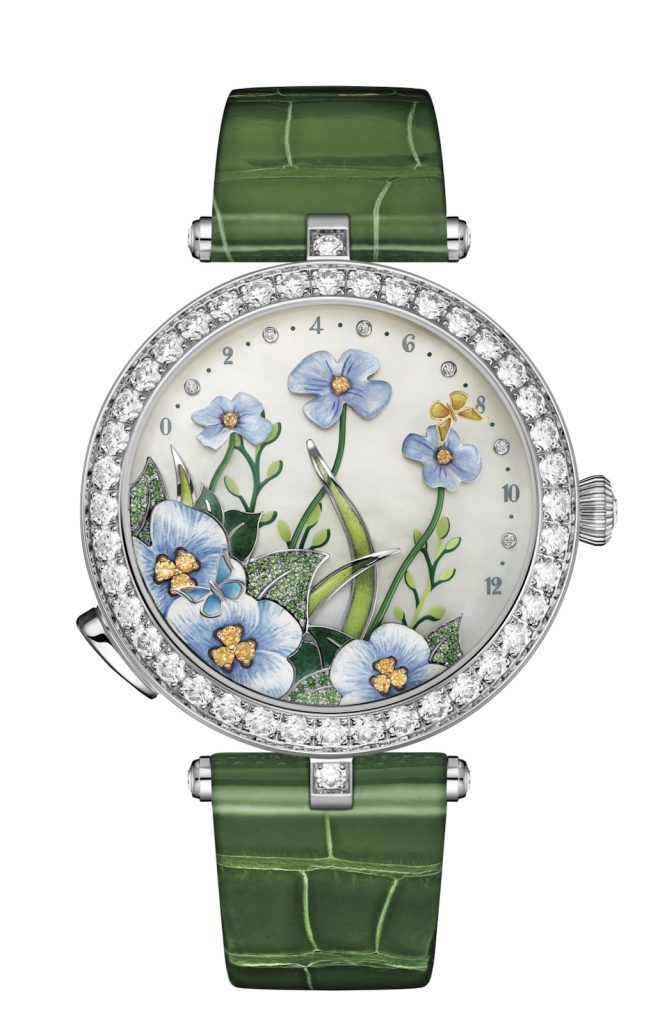
Van Cleef & Arpels’s mechanical garden is in full bloom again. Following the technically impressive and visually stunning Lady Arpels Heure Florales released in 2022—a Best of the Best winner that uses opening and closing flowers to tell the time—comes an equally charming follow-up in the 38 mm Lady Arpels Brise d’Été, or “Summer Breeze.” As its name suggests, when you activate the pusher at eight o’clock, the flowers and leaves appear to sway in the wind, as two plique-à-jour enamel butterflies glide around the periphery to tell the hours and minutes. The stage of this theatrical play is a mother-of-pearl dial, while its actors are adorned in tsavorite and spessartite garnets, miniature painting, and plique-à-jour, champlevé, and vallonné enamel. This is métiers d’art work at its finest.
WATCH OF THE YEAR
BOVET
Récital 28 Prowess 1
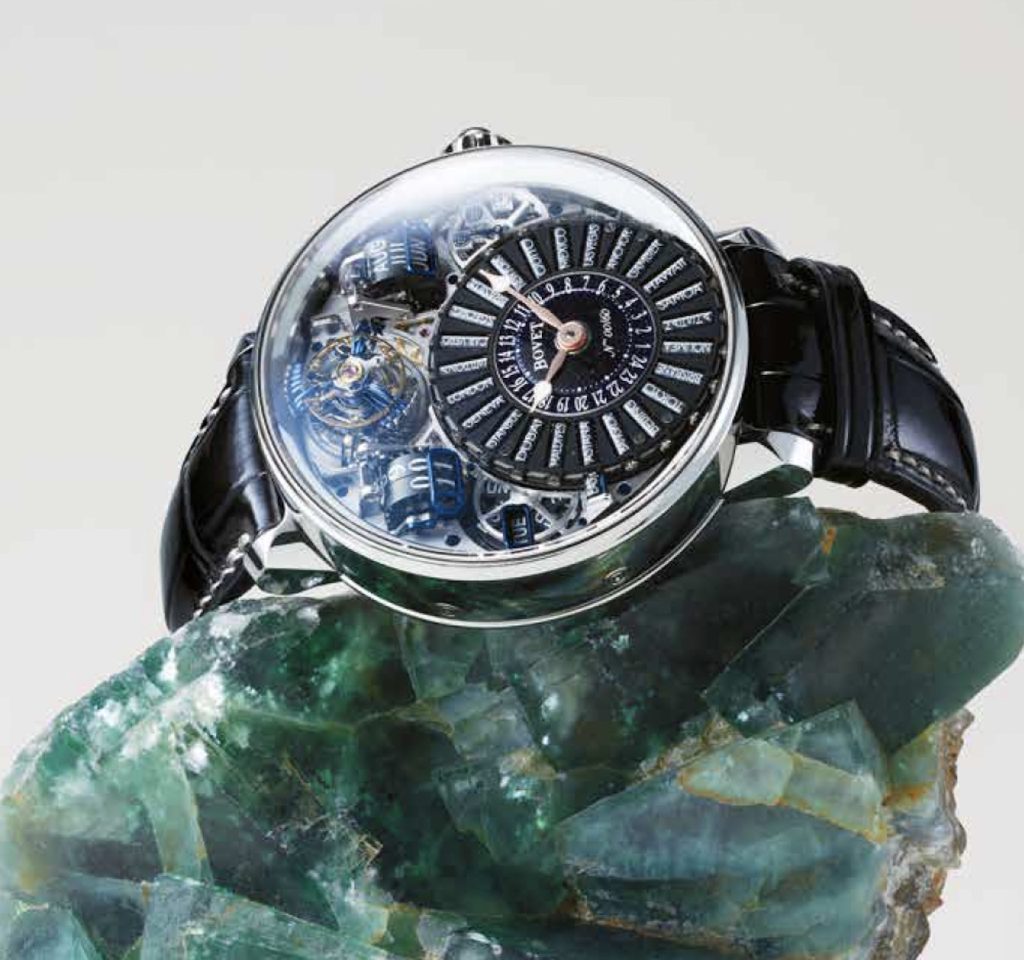
Styling By Jessica Oshita
When watchmaker Louis Cottier invented the world-timer complication in 1931, he created a mechanical wonder that allowed a new era of travellers being able to read time everywhere on the planet simultaneously. But until 2024, watchmakers couldn’t figure out how to display differences in daylight saving time. After all, some countries spring forward weeks earlier than others.
Bovet introduced a solution. The Récital 28 Prowess 1 accounts for variations in American Summer Time (AST), European and American Summer Time (EAS), and European Winter Time (EWT), and displays the 24 global time zones in Coordinated Universal Time (UTC). It cracks the DST problem by applying the cities and time zones to 24 rollers that have four positions (UTC, AST, EAS, and EWT) read on an additional roller to the left of the world-time indication. To change from one mode to another, you simply press the pusher in the crown.
Not satisfied with the complexity of a world’s first, Bovet went a step further and threw in a perpetual calendar as well as a flying tourbillon composed of 62 separate parts weighing just 0.35 grams. Packed into the 46.3 mm case is a new movement that achieves a 10-day power reserve. Almost a century after its invention, the world timer can finally solve a portion of international scheduling issues—just in time for discussions about abandoning DST altogether. But if you consider horology an art form, this is certainly a museum-worthy piece.
ENGRAVING
VACHERON CONSTANTIN
Les Cabinotiers Minute Repeater Tourbillon–Tribute to Arabesque
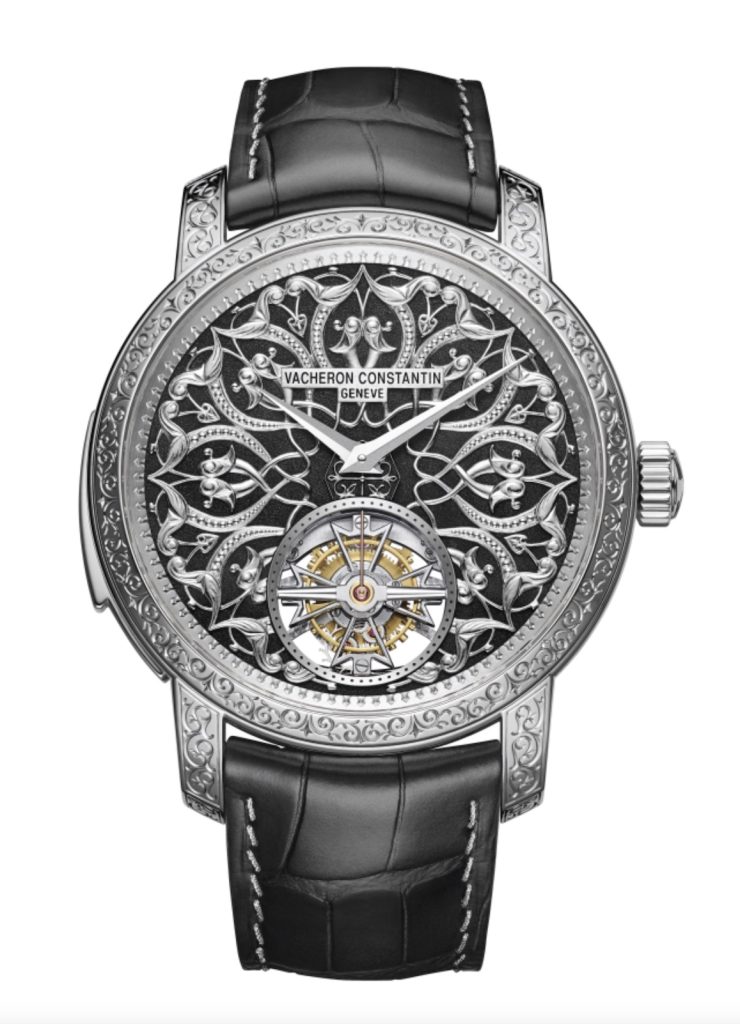
Every year, Vacheron Constantin turns out a small group of unique timepieces for its Les Cabinotiers collection, as well as bespoke orders. The most recent offering, unveiled in Dubai, was inspired by architectural marvels in locations central to the maison’s history. The most extraordinary, the 44 mm by 13.5 mm 18-carat white-gold Minute Repeater Tourbillon–Tribute to Arabesque, was a celebration of historic Arabic architecture.
Its over-the-top case engraving and bas-relief techniques mimic the intricate patterns on the 82 domed minarets at Sheikh Zayed Grand Mosque, the largest in the UAE. The open-worked and engraved 18-carat white-gold dial cover takes some of its cues from mashrabiyas—cantilevered windows covered by latticed wooden screens. Engraving just one component of a watch at this level is a feat, but decorating the entire case, dial, and flange with this specialised handiwork is downright monumental.
COLLABORATION
LOUIS VUITTON X AKRIVIA
LVRR-01 Chronographe
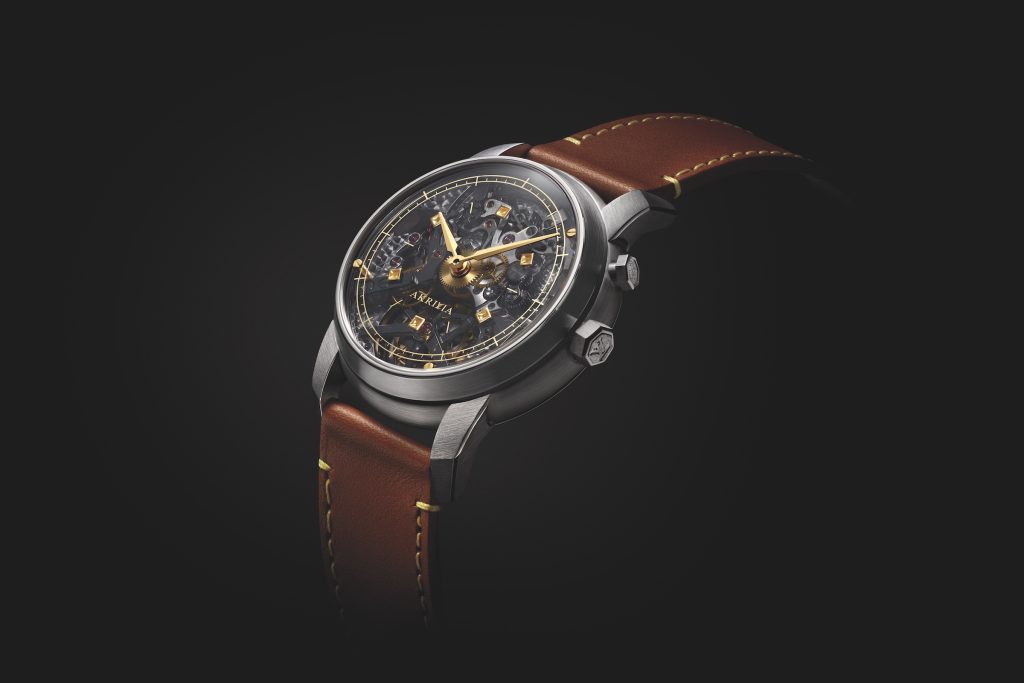
When Louis Vuitton announced a partnership with watchmaker Rexhep Rexhepi’s indie darling, Akrivia, it came as a shock. The French fashion house, known predominantly for its handbags, is on track to reach US$32 billion (HK$248.78 billion) in sales in the next few years according to HSBC. Akrivia, a small, private firm, makes only about 40 watches a year. But thanks to Louis Vuitton’s Watch Prize for Independent Creatives, a new concept was born: a series of collaborative timepieces with independent makers. The 39.9 mm LVRR-01 Chronographe is the first in the lineup. The double-faced watch, set in one of Vuitton’s Tambour cases, is a chronograph with a chiming mechanism, powered by a tourbillon movement Akrivia developed from scratch.
Rexhepi tells Robb Report that while he was initially hesitant to team up with such a behemoth, he decided to do the project because he likes Jean Arnault, director of watches at Louis Vuitton, on a personal level. He’s also a supporter of the LVMH Watch Prize, so he felt it was a good opportunity. “I like to surprise, so I said, ‘Why not?’”
Even more surprising, perhaps, is that the extraordinary timepiece marks the first time the 171-year-old maison has ever combined its logo with another brand’s—an “L” is subtly placed behind the “V” in the Akrivia logo. Serious watchmaking, history-making details, and two unusual but big-name bedfellows deliver a powerhouse combination.
CHRONOGRAPH
PARMIGIANI FLEURIER
Toric Chronograph Rattrapante
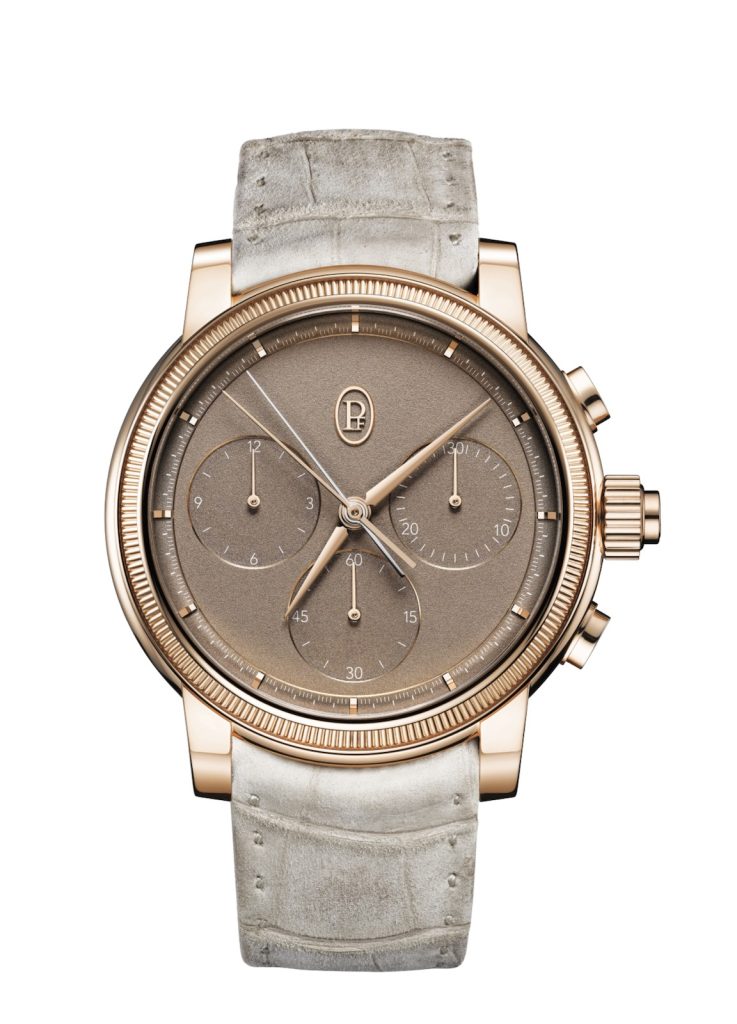
Under the refined eye of CEO Guido Terreni, Parmigiani has been undergoing a renaissance. But while its fresh direction is creating noise, its new look is all about understated elegance. The Toric collection, introduced in April, embodies this ethos.
The 42.5 mm Toric Chronograph Rattrapante with a light-grey, pinbuckle alligator strap is a highlight of the new line: Its case, fluted bezel, and sand-coloured, textured dial are all made from rose gold. The real party, however, is on the back. The solid-gold PF361 integrated split-seconds chronograph movement boasts precision of 0.10 of a second and 65 hours of power reserve. Solid-gold mechanisms are rare not only because of their expense, but also due to the sheer difficulty of working with such a soft material. Factor in the challenge of producing a complicated movement, and you have yourself a very good-looking piece of high horology—and a technically impressive one to boot. It’s a fitting proposition for Parmigiani’s golden era.
REVIVAL
PIAGET
Polo 79
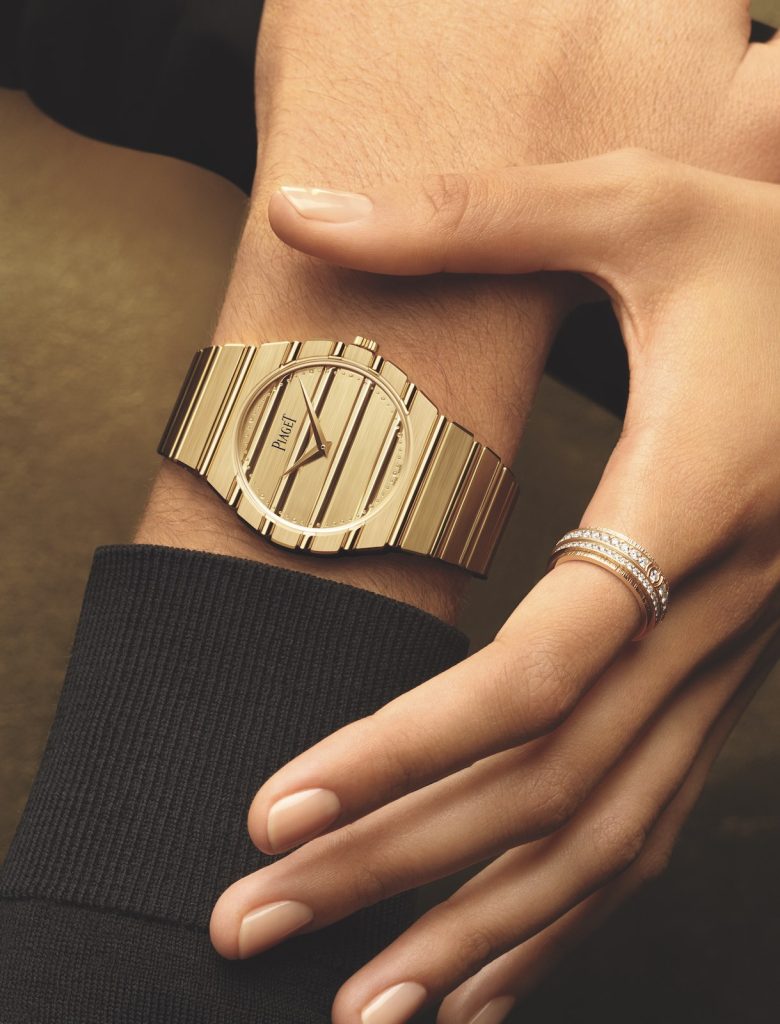
When the Piaget Polo 79 debuted, the energy surrounding the release could have rivalled any disco. The internet went into a frenzy over the ultra-cool, solidgold reimagination of the late-1970s-era reference, and with good reason. Its retro appeal collided with the emerging trend towards vintage dress watches. And in niche collecting circles, pre-owned examples of the model had already been gaining attention.
But unlike its predecessor—which was mostly produced as a quartz timepiece—the 21st-century version is equipped with a mechanical movement: the 1200P1 in-house automatic calibre. In the 1970s, quartz was regarded as the biggest technological development in watchmaking for centuries. At the time, few could have thought that just a few decades later, serious collectors would look down on it. Everything comes full circle.
PERPETUAL CALENDAR
A. LANGE & SÖHNE
Datograph Perpetual Tourbillon Honeygold “Lumen”
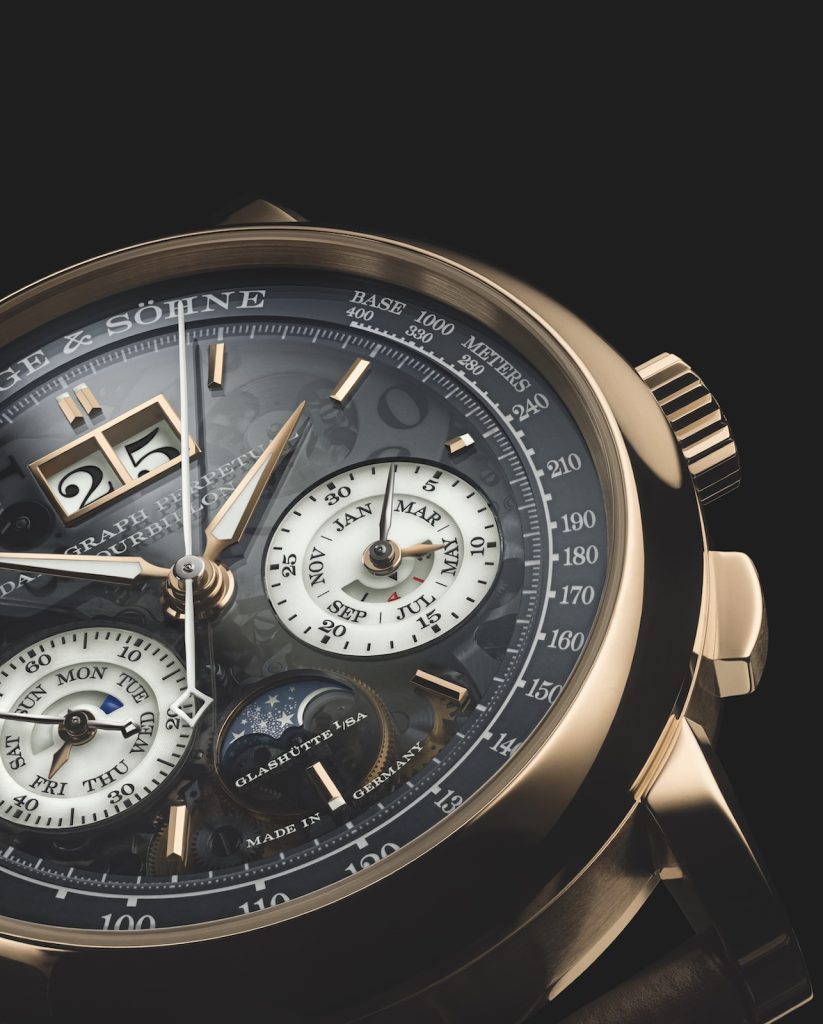
The Datograph Perpetual Tourbillon combines the crème de la crème of A. Lange & Söhne’s achievements, rolling some of the watchmaker’s fan-favourite elements into one piece. When the Datograph was launched in 1999, Lange’s current director of product development, Anthony de Haas, was working for renowned movement maker Renaud et Papi, and he still remembers being struck by the original. “At that time, during the 1990s, the watch industry was gently recovering [from the quartz crisis of the 1970s], so no risks were taken,” de Haas tells Robb Report.
To celebrate the model’s 25th anniversary, de Haas and his team conceived of a new model to set tongues wagging once more. The company encased it in Honeygold (Lange’s proprietary alloy, known for its soft, elegant hue) and accentuated it with a heavy dose of green luminous coating that lights up the displays and functions. Visible through the smoky sapphire crystal is the hand-finished L952.4 movement, which combines a perpetual calendar, a flyback chronograph with a jumping minute counter, and a tourbillon with a stop-seconds mechanism. Few brands can rival the beauty of a Lange movement, and this one is exceptional. It’s the real showpiece and, in discreet German fashion, can only be seen by taking the watch off your wrist for a close-up inspection of its masterful engineering.
SAPPHIRE CRYSTAL
CHANEL
J12 X-Ray
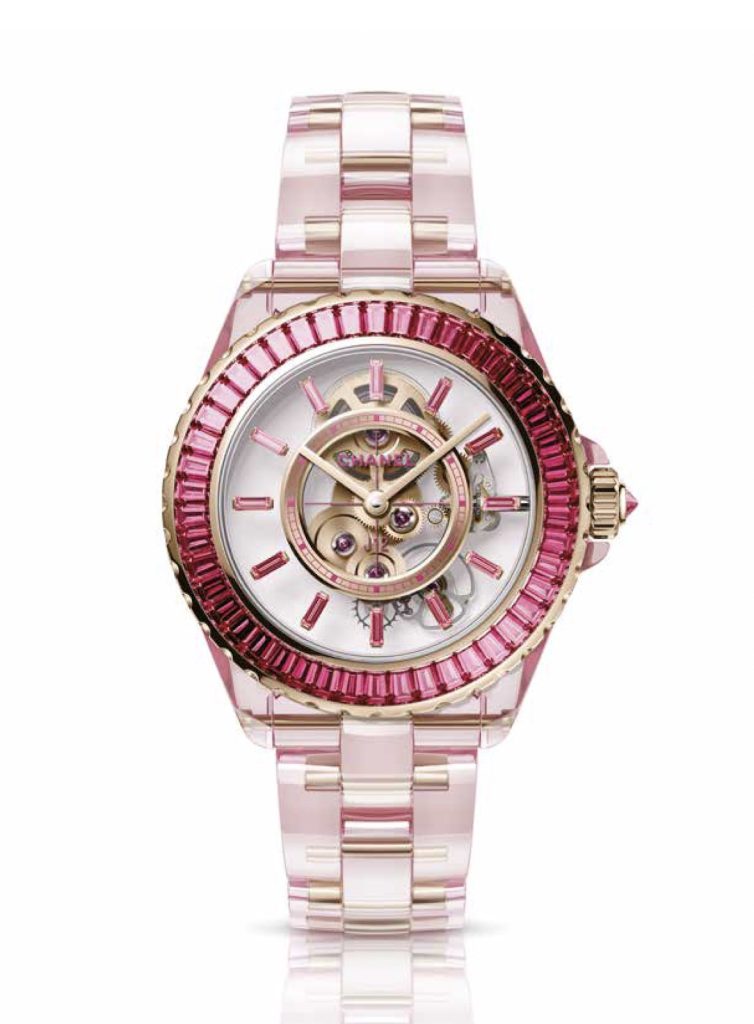
Thanks to 2023’s Barbie movie, pink has been everywhere—and Chanel, which has used the colour across its catalogue for decades, is no exception. The 38 mm J12 X-Ray is crafted from a pink variant of notoriously hard-to-machine sapphire crystal. An uncoloured version, released in 2020, was named Robb Report’s Unisex Timepiece of the Year. At the time, a handful of watchmakers could create cases and a few parts from the material, but making an entire bracelet from it was a groundbreaking achievement.
Tinting crystal in this rosy hue is also not as simple as it sounds. The challenge, Chanel’s president of watches and fine jewellery Frédéric Grangié says, is developing a consistency in the colour of the sapphire crystal used to create the limited edition of 12. “It’s something we are very proud of because we are both a manufacture for ourselves, but we are also a supplier to many, many other houses,” explains Grangié. “And that’s always been very Chanel. It’s the same thing with couture; we have many métiers d’art, more than 35 at this point, and they work for all of the great names, some of which are fierce competitors.” Still, no other house has debuted a full crystal bracelet, let alone one in pink.
ULTRA THIN
BULGARI
Octo Finissimo Ultra COSC
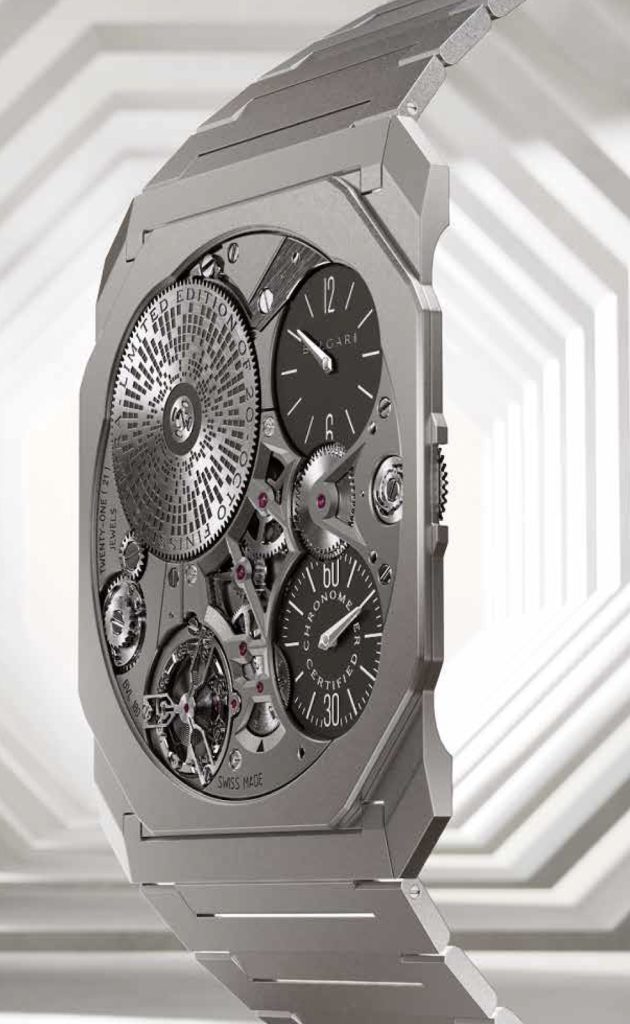
Bulgari’s Octo Finissimo timepieces continue to get so impossibly slim, it’s a wonder there’s anything inside them at all. The Italian house just set its ninth world record with the Octo Finissimo Ultra COSC. With a titanium case measuring just 1.70 mm thick, it feels like second skin. It beats out the company’s previous world record of the slimmest mechanical watch at 1.80 mm and Richard Mille’s at 1.75 mm.
Packed into a space about as thick as a credit card is a carbide main plate, hour- and minute-regulator display counters, a second wheel, winding and time-setting wheels, and a ratchet engraved with a geometric design. How was it achieved? To shave off 0.10 mm, engineers meticulously thinned the sapphire crystal. If these watchmakers try to go any smaller, this watch might just disappear—but don’t think they won’t set a 10th world record before they’re done.
JUMPING HOUR
CHOPARD
L.U.C Quattro Spirit 25
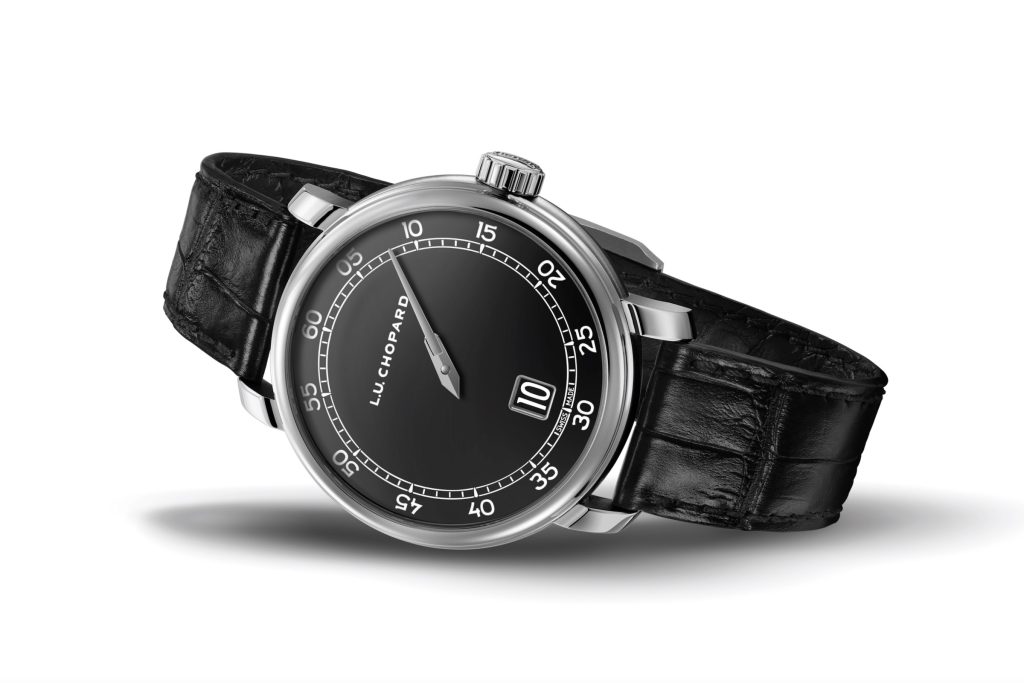
“It’s a bit of a selfish approach,” Chopard co-president Karl-Friedrich Scheufele told Robb Report when speaking about his latest pet project: the L.U.C Quattro Spirit 25. “I always loved the idea of a jumping hour, and it’s a project we started six or seven years ago.” And while other priorities kept it on the back burner, it was always a timepiece Scheufele fervently wanted to get off the ground. It finally debuted in an 18-carat white-gold case, complete with a deceptively plain black dial and an hour display placed prominently at six o’clock.
Simplicity is often the hardest directive in watchmaking, but it is frequently the one that produces the most beautiful timepieces. The dial is elegantly executed, covered in a glossy, jet-black enamel, with vivid white Arabic hour markers placed around a railway track. The hand-wound L.U.C 98.06-L four-barrel movement is just as considered, with Côtes de Genève finishing and a hefty eight-day power reserve that helped it earn the coveted Poinçon de Genève. The result certainly hits the right note.
INNOVATION
MB&F
Horological Machine 11
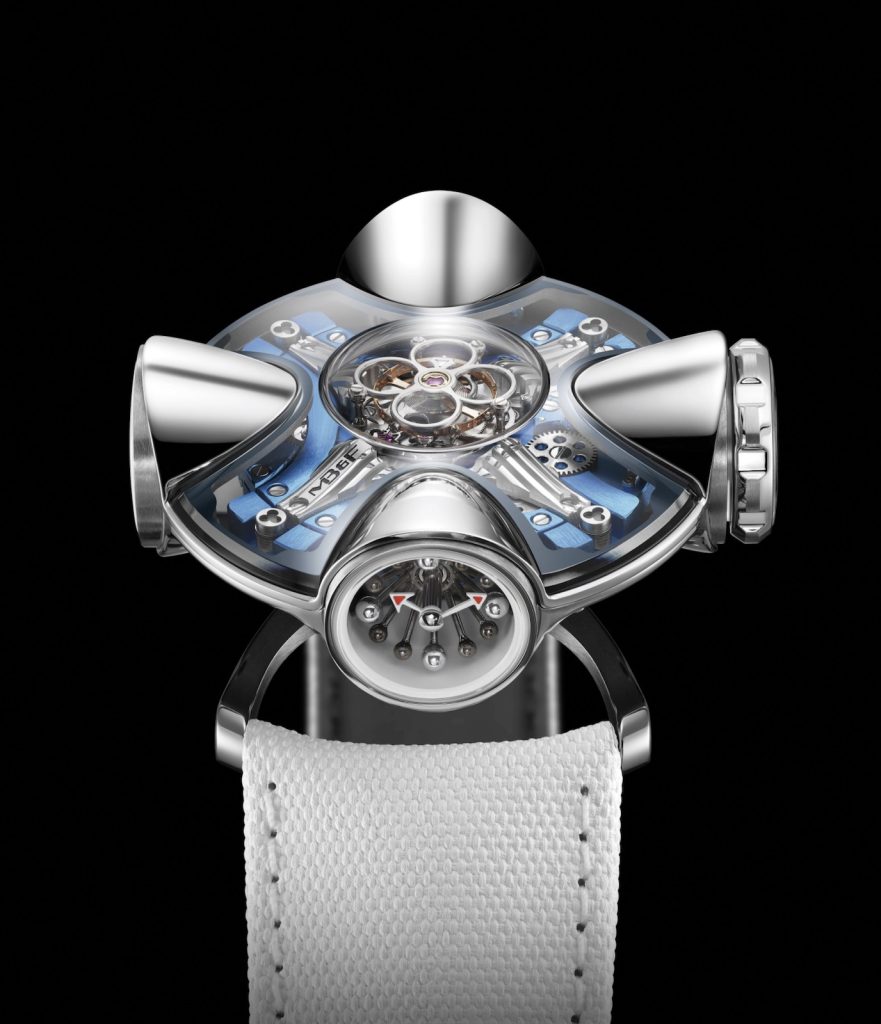
Aliens, robots, and bulldogs have inspired MB&F founder Max Büsser’s wildly imaginative creations. His Horological Machine 11, however, is inspired by the spherical, space-age buildings of the 1950s, 1960s, and 1970s, including Antti Lovag’s Palais Bulles and Matti Suuronen’s Futuro House. That might sound rather vanilla in comparison to previous motifs, but not so in Büsser’s hands.
Four bulbous apertures around the periphery serve as “homes” for the power reserve, time, timesetting crown, and temperature (which comes in either Celsius or Fahrenheit, per the client’s request). The entirety of the watch case can be rotated (similar to a diving-watch bezel) so you can adjust which home faces you on the wrist. The saucer-like shape of the centrepiece allows a bird’s-eye view of the movement through its sapphire crystal, showing off its flying tourbillon in the middle. New case construction for seemingly simple traditional watches is a challenge, but this one was on a much higher order of magnitude. Case in point: To make the piece waterproof, MB&F had to use a whopping 19 gaskets. Most dive watches need only three.






